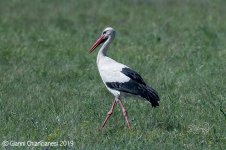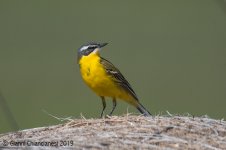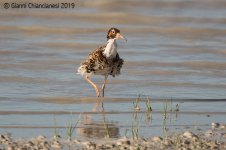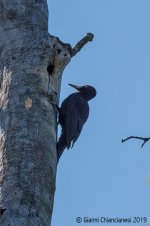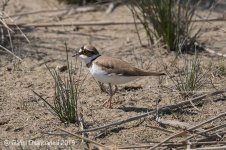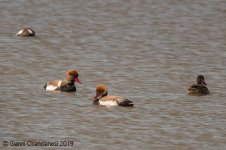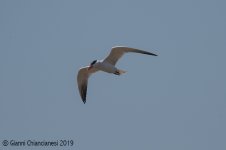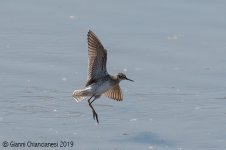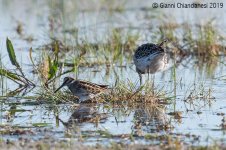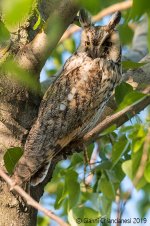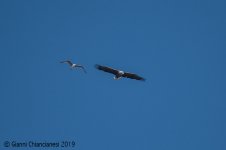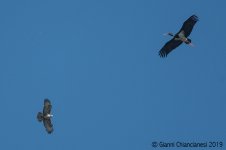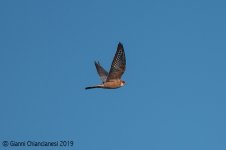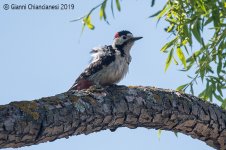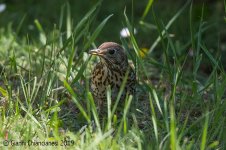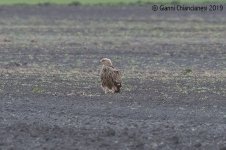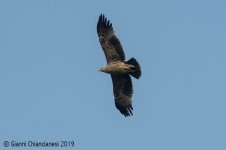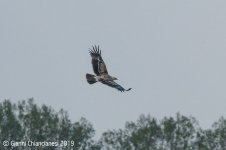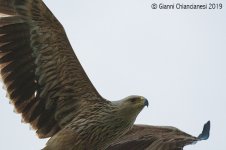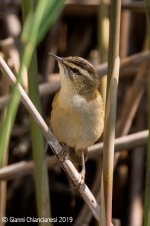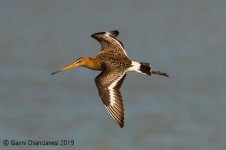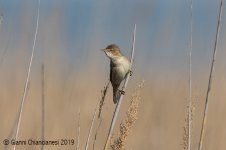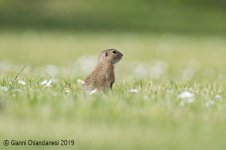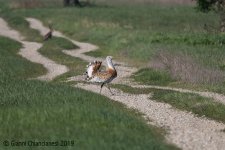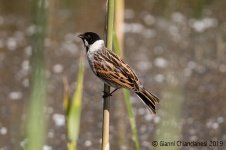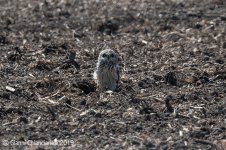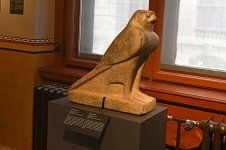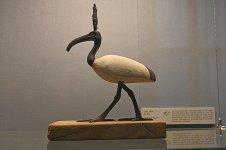
We had been eyeing the calendar for a couple of years, as you don’t always get an Easter break in the second half of April, which even if it’s not the peak of the spring migration, can still be pretty good compared to most Easters. On top of this there was an Italian national holiday, April 25th, just after Easter, which meant that our daughter would get 10 days off school instead of the usual meagre 6 Italian kids normally get. We didn’t want the hassle (and expense) of flying during the school holidays and looked around for suitable birding destinations within drivable distance.
The Lake Neusiedl National Park in South-eastern Austria looked easy to reach and to visit, with enough information available online and some guaranteed target species: Eastern Imperial Eagle, Great Bustard and Syrian Woodpecker, along with many others among waders, birds of prey and warblers. As it turned out, we were a tiny bit early for some of the species we wanted to see, such as Barred Warbler and Lesser Whitethroat, and also for the Marsh Terns (personally among my favourite species). Also, the season had been very dry and the saline lakes had very little water in them, thus there were less waders (both in numbers and in species) than we expected to see, and usually very far away. But the weather was fantastic and all considered we had a very good time, seeing all our “most wanted” targets. We could have done with a Saker, but we knew it wasn’t easy.
Ubiquitous species were: Marsh Harrier, Greylag Goose, Ruff (we would never have thought that one day we would find Ruffs boring!), Yellow Wagtail.
We booked a self-catering accommodation which we found through the Austrian farm stays website https://www.farmholidays.com and asked for information here on BF, through Birdingpal and on the Austrian bird.at forum. We also purchased Leander Khil’s “watching birds in Seewinkel” booklet (available on Leanderkhil.com). Courtesy of the Italian Post, the booklet arrived when we were already in Austria, but the author was very helpful and had a copy waiting for us at the National Park Visitor’s Centre, which is well worth a visit for its helpful staff, good coffee and excellent shop which sells detailed maps of the Park, which are essential for visiting the area.
April 17
home - Udine
This was the last day of school, so we set off at lunchtime and stopped for the night in Udine, in the north-eastern corner of Italy, an hour’s drive from the Austrian border at Tarvisio. En route the usual things: Italian Sparrows, Common Buzzards, Swallows, Starlings, Hooded Crows, Little and Great White Egret, Grey Heron. Yellow-legged and Black-headed Gulls and an unexpected Crag Martin. In the garden of our B&B in Udine we hear a Willow Warbler and a far-away Cuckoo.
April 18
Udine - lake Neusiedl - evening in the Hansag area
We set off early and drive north, then at the border turn east for the long drive through southern Austria. Beautiful scenery but few birds, apart from a Kestrel, a Buzzard, the first Carrion Crows and then Rooks when we get closer to the Lake Neusiedl area.
The fields and vineyards that border the roads that cut through the Park are full of Greylag Geese with their chicks, Pheasants and Hares. We also see what will be the commonest bird of prey of the trip: Marsh Harrier, also the first White Stork, Crested Lark and House Sparrows. We settle in at our accommodation, after a difficult conversation in German with our hostess who doesn’t speak English and then set off for the Hansag area, where the Bustards should be. Some pools along the road that leads from the town of Tadten to the Hungarian border host the first of the uncounted Ruff we will see, by far the most common and numerous wader in the area, Lapwings and Redshanks. A Montagu’s Harrier flies in the distance. The road is dotted with birders and photographers and we soon see the first Great Bustards (although very far away), Curlews, Yellow Wagtails (many of those, too), a very welcome Reed Bunting along the canal, the first Skylarks and 2-3 Short-eared Owls that hunt on the fields. We reach the end of the road and turn left along the canal on the border and then left again on the road that leads to Andau. From the observation tower there, although the light is wrong at this time in the evening, the Bustards are much closer and a couple of males are displaying nicely.
The Lake Neusiedl National Park in South-eastern Austria looked easy to reach and to visit, with enough information available online and some guaranteed target species: Eastern Imperial Eagle, Great Bustard and Syrian Woodpecker, along with many others among waders, birds of prey and warblers. As it turned out, we were a tiny bit early for some of the species we wanted to see, such as Barred Warbler and Lesser Whitethroat, and also for the Marsh Terns (personally among my favourite species). Also, the season had been very dry and the saline lakes had very little water in them, thus there were less waders (both in numbers and in species) than we expected to see, and usually very far away. But the weather was fantastic and all considered we had a very good time, seeing all our “most wanted” targets. We could have done with a Saker, but we knew it wasn’t easy.
Ubiquitous species were: Marsh Harrier, Greylag Goose, Ruff (we would never have thought that one day we would find Ruffs boring!), Yellow Wagtail.
We booked a self-catering accommodation which we found through the Austrian farm stays website https://www.farmholidays.com and asked for information here on BF, through Birdingpal and on the Austrian bird.at forum. We also purchased Leander Khil’s “watching birds in Seewinkel” booklet (available on Leanderkhil.com). Courtesy of the Italian Post, the booklet arrived when we were already in Austria, but the author was very helpful and had a copy waiting for us at the National Park Visitor’s Centre, which is well worth a visit for its helpful staff, good coffee and excellent shop which sells detailed maps of the Park, which are essential for visiting the area.
April 17
home - Udine
This was the last day of school, so we set off at lunchtime and stopped for the night in Udine, in the north-eastern corner of Italy, an hour’s drive from the Austrian border at Tarvisio. En route the usual things: Italian Sparrows, Common Buzzards, Swallows, Starlings, Hooded Crows, Little and Great White Egret, Grey Heron. Yellow-legged and Black-headed Gulls and an unexpected Crag Martin. In the garden of our B&B in Udine we hear a Willow Warbler and a far-away Cuckoo.
April 18
Udine - lake Neusiedl - evening in the Hansag area
We set off early and drive north, then at the border turn east for the long drive through southern Austria. Beautiful scenery but few birds, apart from a Kestrel, a Buzzard, the first Carrion Crows and then Rooks when we get closer to the Lake Neusiedl area.
The fields and vineyards that border the roads that cut through the Park are full of Greylag Geese with their chicks, Pheasants and Hares. We also see what will be the commonest bird of prey of the trip: Marsh Harrier, also the first White Stork, Crested Lark and House Sparrows. We settle in at our accommodation, after a difficult conversation in German with our hostess who doesn’t speak English and then set off for the Hansag area, where the Bustards should be. Some pools along the road that leads from the town of Tadten to the Hungarian border host the first of the uncounted Ruff we will see, by far the most common and numerous wader in the area, Lapwings and Redshanks. A Montagu’s Harrier flies in the distance. The road is dotted with birders and photographers and we soon see the first Great Bustards (although very far away), Curlews, Yellow Wagtails (many of those, too), a very welcome Reed Bunting along the canal, the first Skylarks and 2-3 Short-eared Owls that hunt on the fields. We reach the end of the road and turn left along the canal on the border and then left again on the road that leads to Andau. From the observation tower there, although the light is wrong at this time in the evening, the Bustards are much closer and a couple of males are displaying nicely.
Attachments
Last edited:




